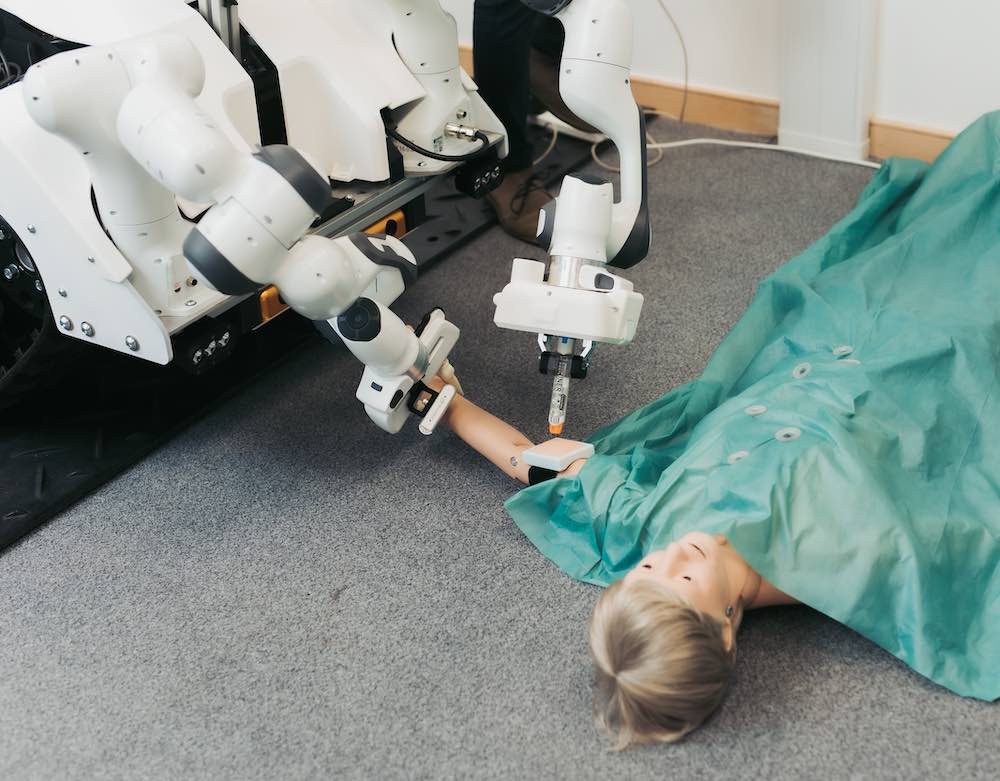The University of Sheffield designed a medical robot to operate in high-risk areas such as contaminated areas, where doctors and nurses cannot intervene. This remotely controlled machine can not only monitor vital signs such as temperature, blood pressure and heart rate, but can also administer injections.
A technological solution that could make a difference in emergency scenarios such as humanitarian disasters or war zones.
Where did the idea come from?
Necessity is the mother of invention. In a world where emergencies can arise in places that are inaccessible or dangerous to humans, such as unsafe areas after (or during) an earthquake, or areas affected by radiation, the need to provide rapid and safe medical care is more urgent than ever . That's where the medical robot comes in.
Using medical teleassistance (MediTel) technology, researchers from the Research Center on Advanced Manufacturing, Sheffield Robotics and Department of Automatic Control and Systems Engineering they created a robotically controlled unmanned ground vehicle (UGV).
But it's not just a robot. It is a virtual reality (VR) system that allows doctors to evaluate patients in dangerous environments, perform remote triage while ensuring their safety.
With its two robotic arms, the medical robot can use instruments remotely, carrying out a critical initial assessment of a patient in just 20 minutes. And yes, it can also administer pain relief with an automatic injection system, then transmitting the patient's vital signs to the remote operator in real time.

Medical robot, a lightning project
Nine months. This is the time it took to develop and field test a system as advanced as MediTel. David King, head of digital design at the AMRC, praised the entire project team for this incredible achievement. MediTel combined existing medical devices with cutting-edge robotic systems to develop a platform that allows a remote operator to navigate difficult terrain and provide critical diagnoses.
The Sheffield team won't stop now. With the project's success, he hopes to explore the development of a large-scale emergency medical platform, ready to be deployed in the event of humanitarian disasters. The potential is enormous.
A step forward for technology… and humanity
MediTel is not just a piece of advanced technology; it is a symbol of hope, a bridge between medicine and engineering, and a testament to what is possible when innovation meets compassion.
A medical robot like this could hold the key to saving lives in otherwise inaccessible contexts. The medicine of the future may not only be in the hands of humans, but also in the hands of machines designed to protect and heal.


